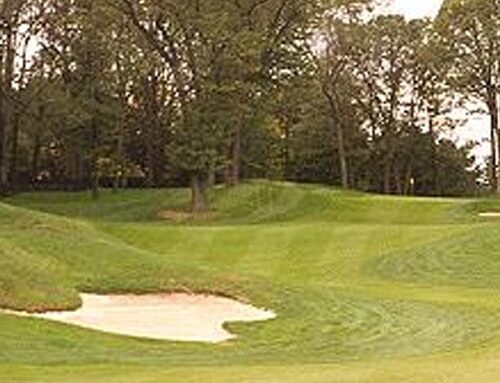What elements of a golf course add enjoyment to the experience? For many, the golf course should play fast—both in its actual playing surfaces and in the time it takes to play. A connection to the surrounding ecosystem and environment should be apparent, also. The days of long, brute-ish championship style golf courses and lush/green playing conditions are fading… as long as the golfer’s attention is seized by the adventure of the golf course from start to finish, you have a captivating golf experience worth celebrating.
Waterton Lakes remote location in southwestern Alberta might hinder its chances of being included on “bucket list” discussions; what a shame! Perhaps it should be. Although you might not find Stanley Thompson’s notable bunker flair used at other Albertan Rocky Mountain masterpieces like Banff Springs or Jasper Park Lodge, an immensely fresh breath of simplicity awaits. Golf, without the unnecessary frills, in one of the world’s most magical settings, is a winning combination!
Alberta’s mountain golf courses are notably celebrated in Canada and beyond (both Banff Springs and Jasper Park Lodge’s inclusion on the 147 Custodians speak to that), and since the COVID-19 golf boom, tee times are the various offerings became sparse; Waterton, on the other hand, isn’t jam packed with golfers. Located roughly 3 hours south from the Calgary International Airport and the same driving distance from Glacier Park International Airport in Kalispell, Montana, the lack of distractions from tourist buses and an overwhelmed tee sheet enhances the experience here. Its remoteness is a refreshing tonic for those seeking a more laid-back, at-one-with-nature 18 hole episode.
Waterton Lakes National Park was established as a Dominion Forest Park in 1895, later becoming Canada’s fourth National Park in 1911 when the National Parks Branch (known today as Parks Canada) was established. The National Parks Branch was headed by a gentleman named James B. Harkin, who is largely responsible for the development of the plethora of golf courses in Canada’s National Parks from coast-to-coast, including Waterton (Alberta), Waskesiu (Saskatchewan), Clear Lake (Manitoba), Fundy (New Brunswick), Green Gables (Prince Edward Island) and Highland Links (Nova Scotia). Jasper and Banff, while on National Parks land, were developed by Canadian National Railway and Canadian Pacific Railways, respectively. Terra Nova in Newfoundland, the final golf course developed in—though mostly adjacent to—a National Park, was not established until the mid 1980s.
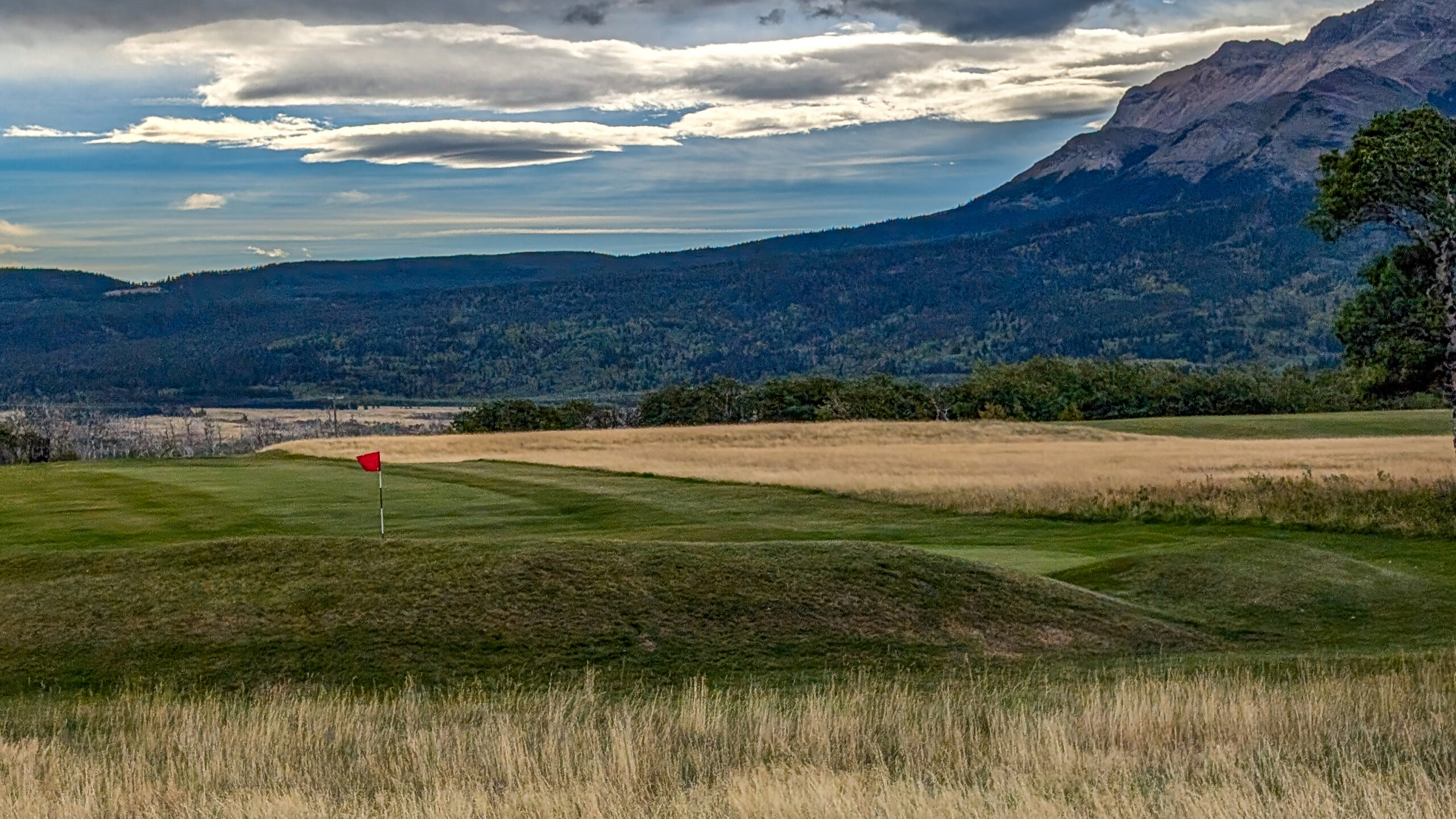
The par 3, 4th’s green, illustrating the sharp juxtaposition between the wispy brown prairie lands and the grey Rocky Mountains
Harkin understood that golf courses could be used as a tourism venture to promote the parks, both domestically and abroad. His contributions, along with others such as James Smart and J.H. Atkinson, brought a great deal of attention and tourism to Canada’s national parks.
In 1921, following World War I, Harkin enlisted the services of William E. Thomson to build the first National Parks golf course at Waterton Lakes. Thomson, no relation to Stanley Thompson, was a Scottish golf professional responsible for establishing and running the original 9-hole golf course in Banff. His work there predates Donald Ross’s 18-hole routing and Stanley Thompson’s subsequent renovation and additions to the famed Banff links. Thomson’s nine-hole golf course at Waterton opened in 1922.
A small clubhouse was constructed in 1928. Due to the fire in the 1950s, however, it was replaced with the existing restaurant and pro shop.
According to hearsay, in 1929, Stanley Thompson was asked to develop a plan to expand the nine-hole golf course. If, however, there is documented evidence to support this, it remains undiscovered. The Lethbridge Herald and Canadian Golfer reported that the course expanded to 18-holes, 6100 yards in 1932; neither record ever mentions Thompson contributing to the project. One would think, considering Thompson’s fame at the time, that he would have been mentioned in at least one of the pieces. The Lethbridge Herald then reported on June 15, 1932 that superintendent Herbert Knight, golf professional Teddy Wagstaffe, and other members of the parks team were responsible for the layout of the new nine. The crew opted to have this new nine wind itself around the perimeter of the already existing layout. 18-holes officially opened on Dominion Day (July 1, 1932) and fees were either 50 cents for 18 holes, one dollar per day, or three dollars for a week!
- Waterton Lakes, 1922
- A decade later following expansion
In the mid 1940s, Stanley had visited Waterton Lakes at the request of James Smart, who, at that time, headed the National Parks branch. In archival documents, Thompson writes to James Smart saying that he is familiar with the golf course, but omits mention of any prior work done. I believe this to be his first significant contribution to the golf course’s development. Curiously, perhaps, Stanley suggested that the course be moved to a new location, rather than make renovations to the existing routing. He deemed that the routing was not desirable and that the better land by the hotel was more suitable. This move, however, never materialized. In 1952, he completed a renovation plan for the golf course at its existing site, which included a transition to the highly desirable feature of grass greens—up until this time they were oiled sand based. A number of his recommendations are said to have been executed, but not the plan in its entirety. His last visit to Waterton Lakes took place in November 1952, a year before his death, making Waterton Lakes the final golf course that he worked on. And, unlike so many of his golf courses in Canada, it has remained more or less untouched since then.
A devastating fire in 2017 burned a vast area of the park, including portions surrounding the golf course. The effects of the fire are still evident today, if you look close enough. Many trees are still visibly charred, right up against the course’s boundary at the base of Mount Crandell. More recently, LOBB + Partners, under the guidance of Alex Hay and Oliver Tubb, began consulting work with Lakeland Golf Management in 2022 to revitalize the course. The foremost aim is to improve course conditions for everyday play.
Waterton Lakes National Park is described as the junction where the Mountains meet the Prairies. This is an apt description for the golf course, too, which is laid across a gently rolling plain over which Mount Crandell looms. Taking a broader view, the golf course is situated on a bench north-east of the town site, overlooking Lonesome Lake, with Vimy Peak, The Prince of Wales Hotel, and the glacial waters of the Waterton Lakes all to its South.
The golf course embodies the natural elements of its setting to deliver a quiet solitude that is often found at some of the game’s most hallowed venues. It’s clear that its stewards have long recognized that the setting is good enough on its own and that any signs of artificiality would only detract from it. With the mountains looming, the ever-present wind rustling the trees and golden fescue, and the ball bouncing along the firm fairways, the playing experience is pure bliss, reminiscent of Scotland even. Despite the surrounding mountains or rolling terrain, the course is, thankfully, eminently walkable and, as with most, best experienced this way.
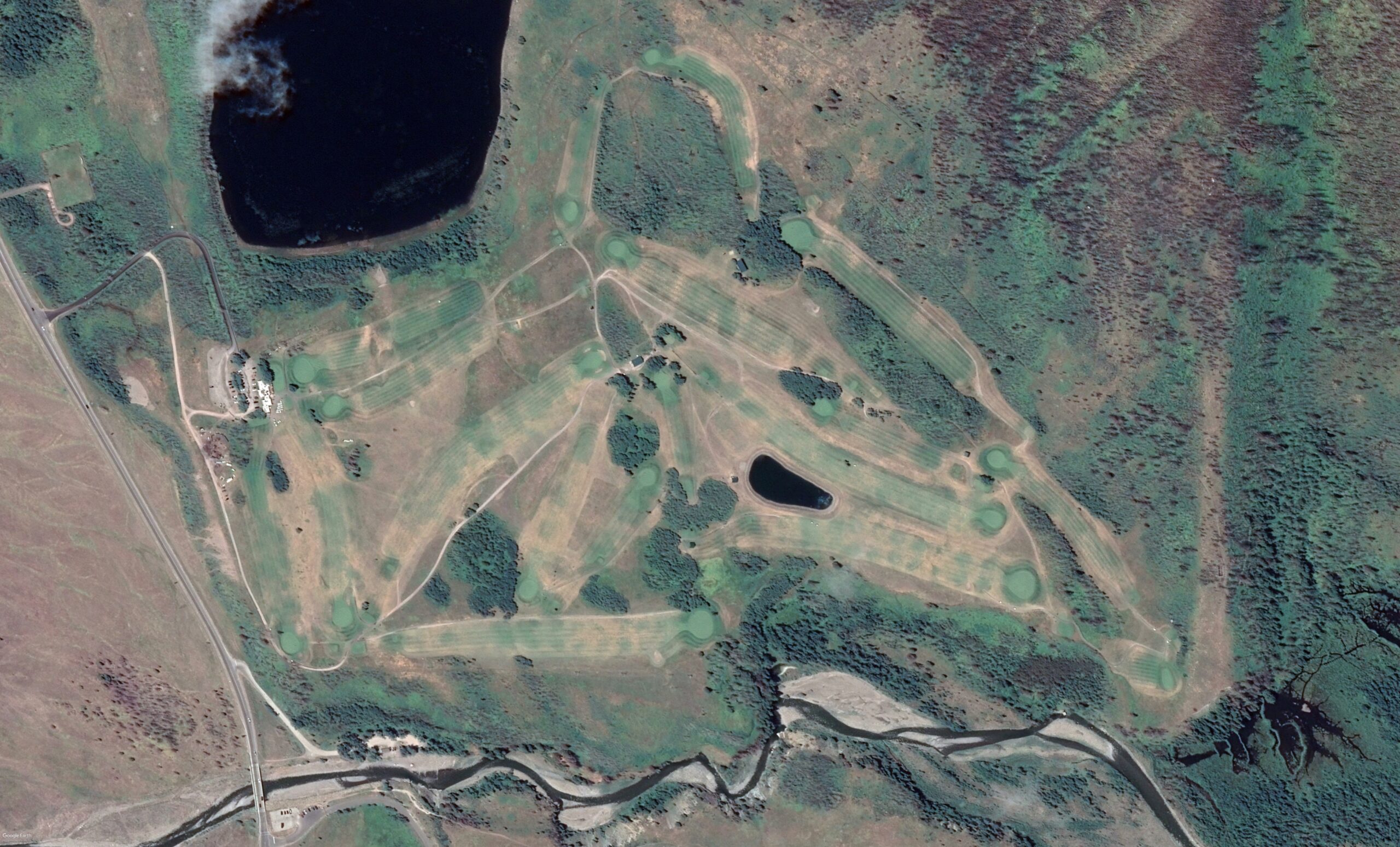
Numerous desierable qualities are viewable from the aerial, including Waterton’s lack of fear surrounding brown, firm playing conditions (!) and a subdued design.
The architectural features are mostly low-profile with relatively few bunkers; as such, the topography and surrounding landscape create most of the visual and strategic interest. Despite being less heavy-handed than most of his other work, Stanley’s influence is nevertheless evident throughout the routing. Green settings and mounding offer glimpses into his well known work across Canada. Though because Stanley and Associates were only involved in a limited capacity, these features are much more subdued and more sporadic.
Holes to Note
Second hole, 485 yards; The collection of half par holes is one of the golf course’s strengths. At only 485 yards, this is certainly a short par 5 for today’s standards, let alone at elevation north or 4,000 feet above sea level! The tee shot is framed by the glowing fescue and Mount Crandell hovering directly above. The approach up and over the diagonally bisecting hillside is blind, and, from the tee, there is little reference as to where the green is situated.
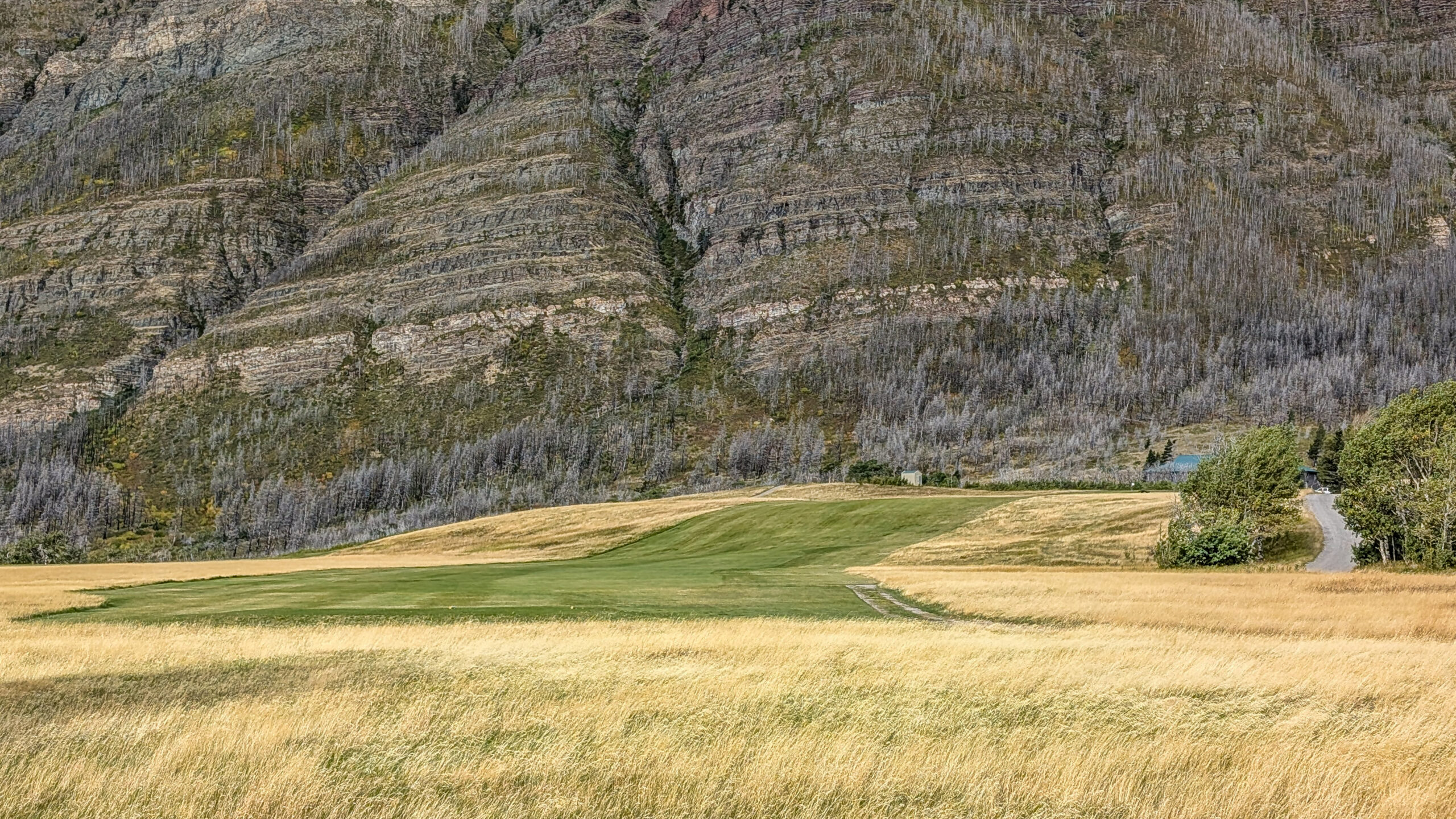
The second hole from the tee
Third hole, 316 yards; With the fairway rising from the tee to a plateau before falling back down to the green, this hole plays opposite in concept to the 2nd.

The inconspicuous view from the third’s tee.
This shorter par 4 is drivable with the right windy conditions and a favourable bounce (or two)! Waterton’s location, sandwiched between the mountain ranges, is conducive to windy conditions, with it being a constant factor in a game here. Aiming down the left side provides the best opportunity to find the green, which is slightly propped up. A lonesome bunker slightly short and left adds complexity to any decision from the tee, as does the mounding behind the green, which muddles with depth perception from the fairway. Don’t forget to ring the bell as you come off the green, even if no one is around.
- Looking at the third green from the fairway…
- …and greenside.
Fourth hole, 221 yards; If the second is a half-par hole, its counterweight certainly comes at the long par 3, fourth. The uphill tee shot, framed yet again by Mount Crandell in the distance, is another blind one. With the same hillside found on holes 2 and 3 obstructing the sight of the green from the tee, a nearby platform provides an opportunity to catch a glimpse of the putting surface, should the need arise to acquaint oneself with the proper line of play. A set of shoulder mounds in behind adds a measure of flair to the small, front-to-back sloping green.
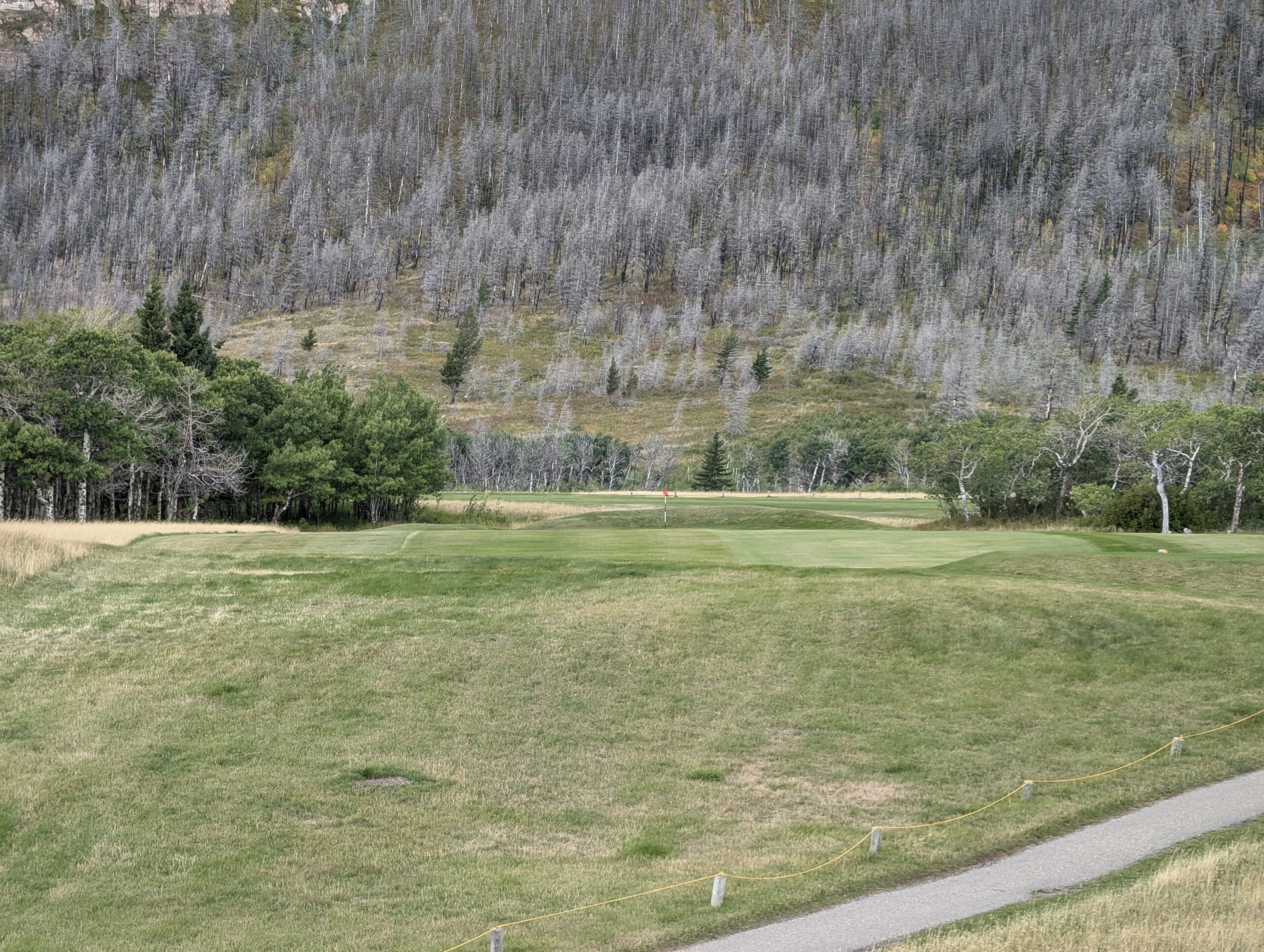
A ladder up to a viewpoint allocates this view of the par 3, fourth, but from the tee, it’s entirely blind, with only the top of the flag visible!
Seventh hole, 244 yards; Upon first glance, the Seventh might look like a nondescript hole, but its sheer length is as daunting of a task as the course’s many other features. Even though it plays downhill, the blustery wind is commonly head-on; therefore, a driver might be the club of choice, and it may still not be enough. Walking away with four is the likeliest scenario. Better luck next time!
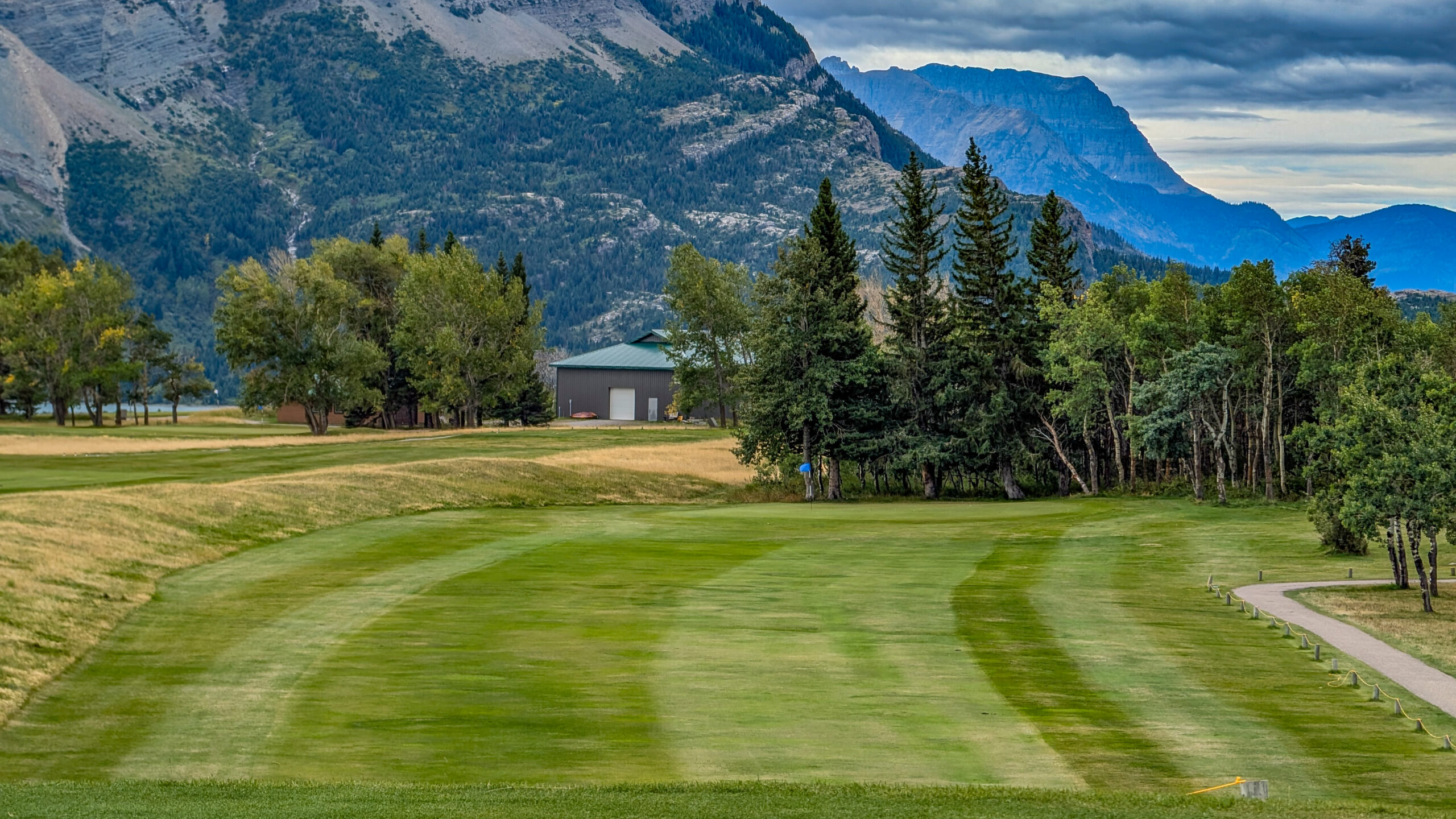
Eighth hole, 379 yards; Stanley Thompson’s protege Robert Trent Jones Sr. once claimed the straight hole is the most difficult in golf, for it requires players to hit not one, but two (or three!) straight shots. Certainly, straight shots can confound players who prefer to work the golf ball, complicating the feat of simply getting the ball from the tee into the hole. The Eighth certainly falls into the straight hole category, and one that’s complex.
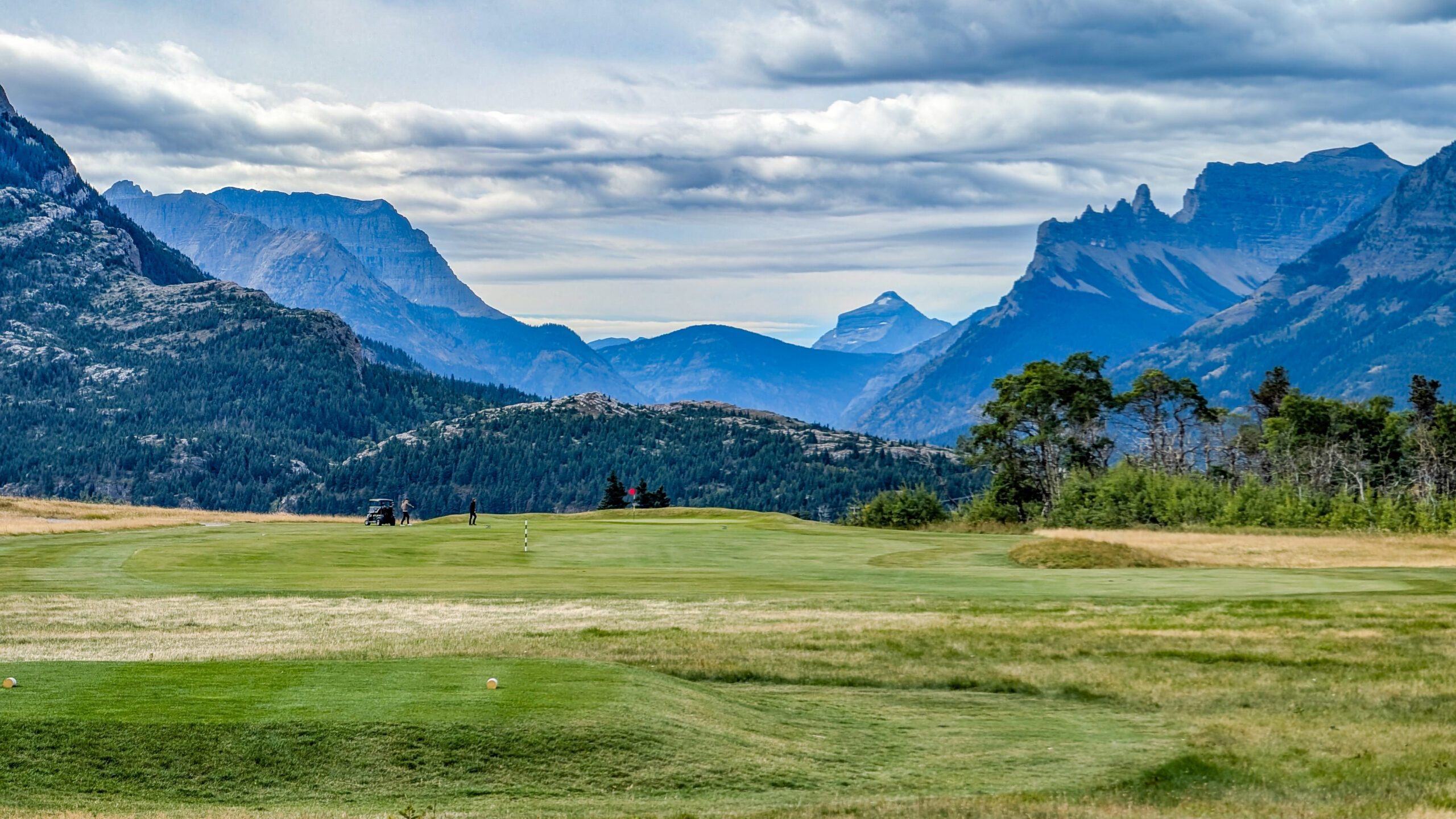
The understated nature of Waterton Lakes contrasts sharply against the majestic Rocky Mountains, as seen on the Eighth tee shot.
Upon approach, the green sits perched right on the edge of the hillside, with more shoulder-esque mounding to the rear. This is a good place to take a moment to stand at the back of this surface and soak in the surroundings—namely, the Prince of Wales Hotel and magnificent mountain range that are in full view here.

Humanity’s size is often put into perspective in mountainous settings, as evident looking at the Rockies of Waterton Lakes National Park with a long view into Montana.
The routing does a good job of spreading around the topographical interest, with the front nine playing inside of the back, both in a counter clockwise fashion. Thus, they both interact with the elevation changes multiple times throughout their unfoldings.
Thirteenth hole, 157 yards; At the Thirteenth, a large coulee that must be climbed leads to a green pad inserted into the hillside.
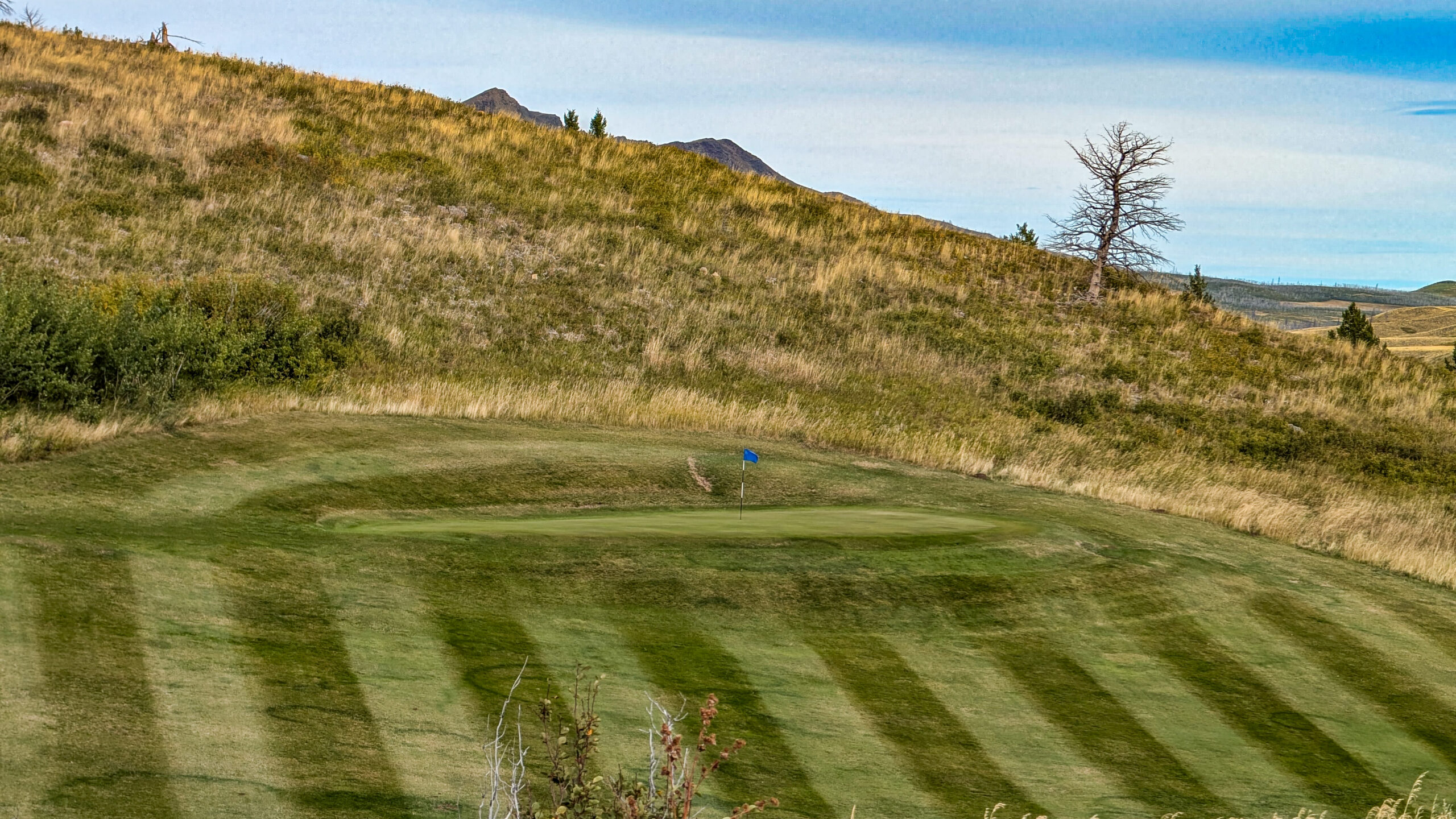
No more than 10 yards in depth, it is fronted by a fall-off and rear guarded by a steep bank, making this approach one of the most delicate. Of all of the green complexes, the Thirteenth’s is apt to deal the most severe punishment for a misjudged tee shot. It is almost as if someone took an excavator and scooped out this green site to create a little bench for which a giant might come down from the mountains and take a rest. Exquisite.
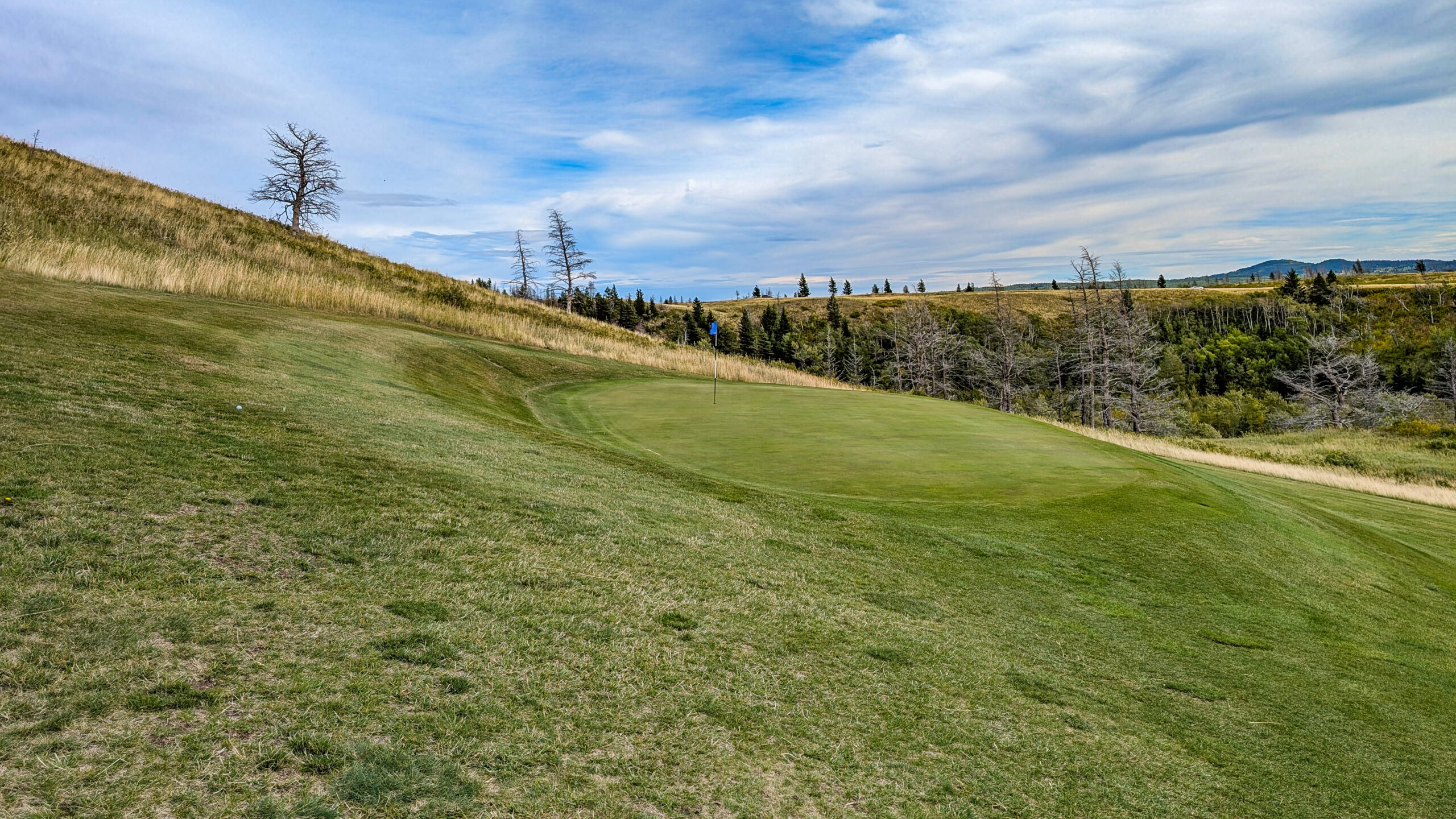
Fourteenth hole, 346 yards; A narrow fairway is characterized by the divided forest and that of the valley through which the golf course plays. Set high above the coulee at the highest point on the property, and facing due south with the mountain range in full view again, the captivating scenery and natural land movement combine to deliver an exhilarating tee shot. With the fairway sloping sharply from right to left, the start line of the tee ball is primordial.
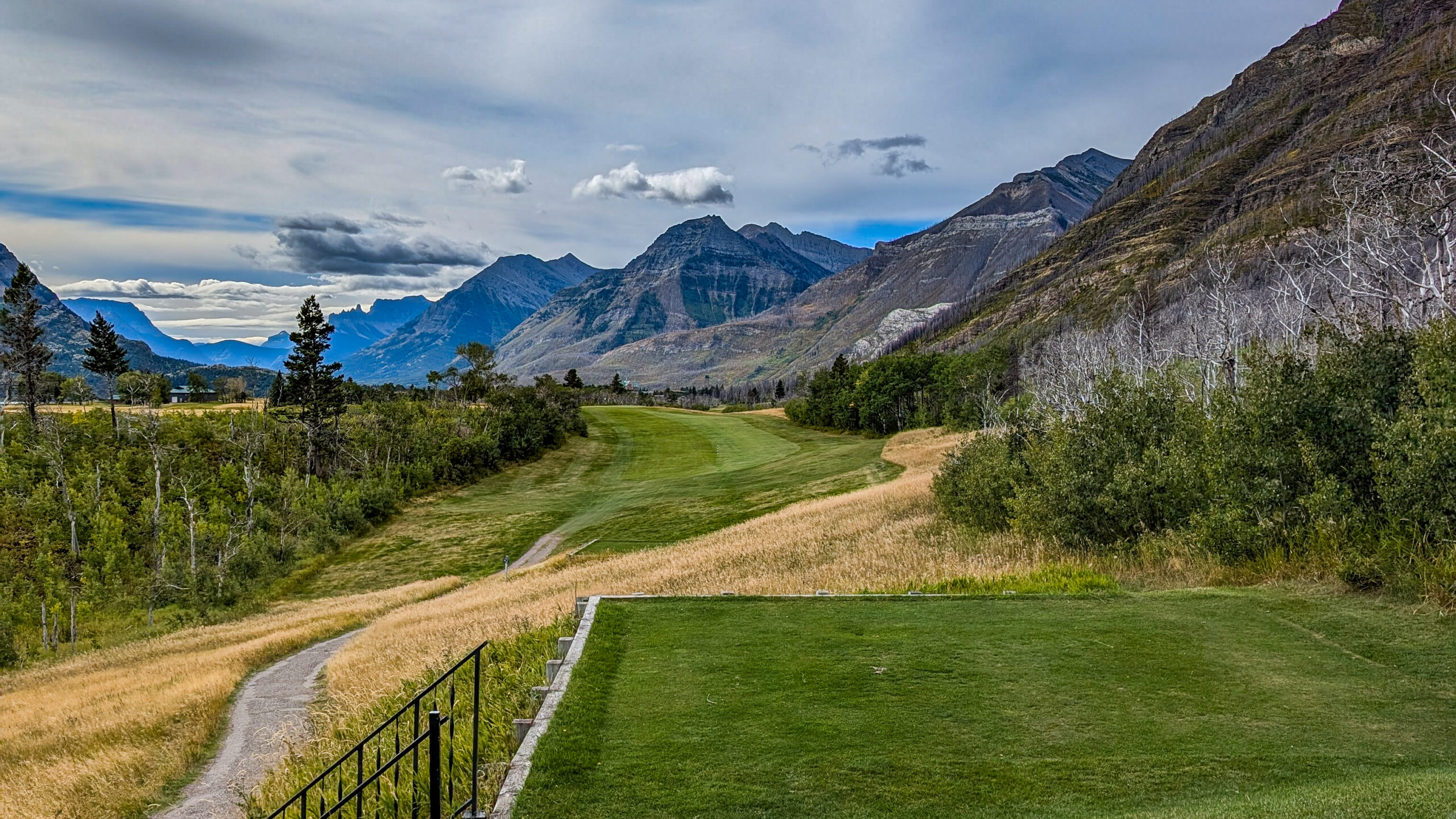
Fifteenth, 419 yards; If anyone ever criticizes the greens for being “flat, boring circles,” one would be confused by that criticism upon visiting Waterton Lakes. While a majority might have more subtle features that are defined by the broad slopes rather than internal contouring, the Fifteenth shakes that stereotype. The largest pad on the course slopes severely in many directions, with small wavy internal contours that befuddles and tricks the eye. In 1932, this hole was characterized as one of the best in Western Canada, and with such a green site and surface, it remains obvious why.
- The tee shot at the Fifteenth with the Prince of Wales hotel in the distance, right.
- Looking at the low-lying green at the Fifteenth.
Sixteenth hole, 299 yards; If ever there is a golf hole that brings to mind the banked slopes of the Indianapolis Motor Speedway, this might be it. Perfectly shaped to the contour of the land and mountain perfectly in view, the fairway cants from right to left with the dog leg, tempting the aggressive player to cut off as much as they can chew to reach the green of this short par 4.
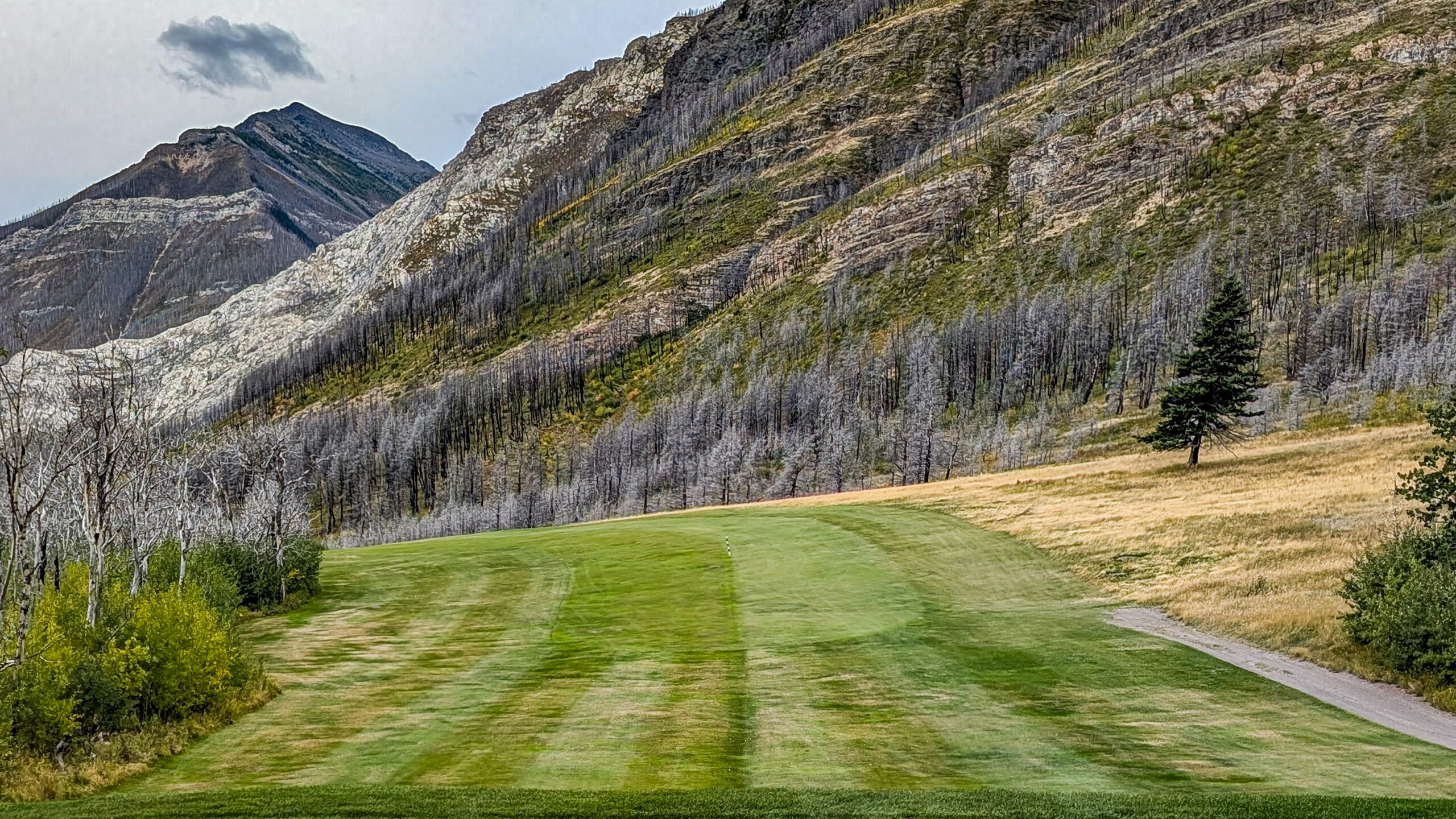
It’s easy to see why the sixteenth is one of the favourite golf holes of Golf Journalist Kevin Van Valkenburg.
I have played better courses during my life, but none that are as meaningful to me. I love the way the ball looks when it’s framed against the mountains, and the way it falls out of the sky, almost in slow motion. My favorite hole will always be the 16th, the driveable par 4 that is a sharp dogleg left. Whenever I play Waterton, I tee the ball up on the right side of the box, take aim at the dead tree in the middle of the forest that watches over the hole like a sentinel, and swing from the heels. Hundreds of my golf balls have disappeared into that forest, never to be seen or hit again. But a few have survived the journey. A few have cleared the tree tops. And when I make the turn at the dogleg and see the green, the rush of seeing my ball on the putting surface is like nothing else I’ve ever felt in the game. It is my cathedral.
-Kevin Van Valkenburg, Editor at No Laying Up
Interesting as this tee shot is from this angle, just to the right of the Fifteenth green stands the original tee for the hole, which provides a more direct, albeit blind, line of play to the Sixteenth green.

Closer to the original angle and looking down the Sixteenth hole’s green complex around the corner of the current tee.
Eighteenth hole, 396 yards; If the prior seventeen holes didn’t leave an impression, the Eighteenth is likely to do so. Featuring another elevated tee shot to culminate the round, the correct manner of play is not immediately evident.

A rather large trench disrupts the fairway all the way towards the ideal landing area and dense mounding of fescue separates the 9th and 18th fairways (left). Playing out of the valley provides a shorter, yet blind, approach. Any approach shot is made even more tricky due to the elevated green that requires the golf ball to be hoisted into the mercy of the wind.
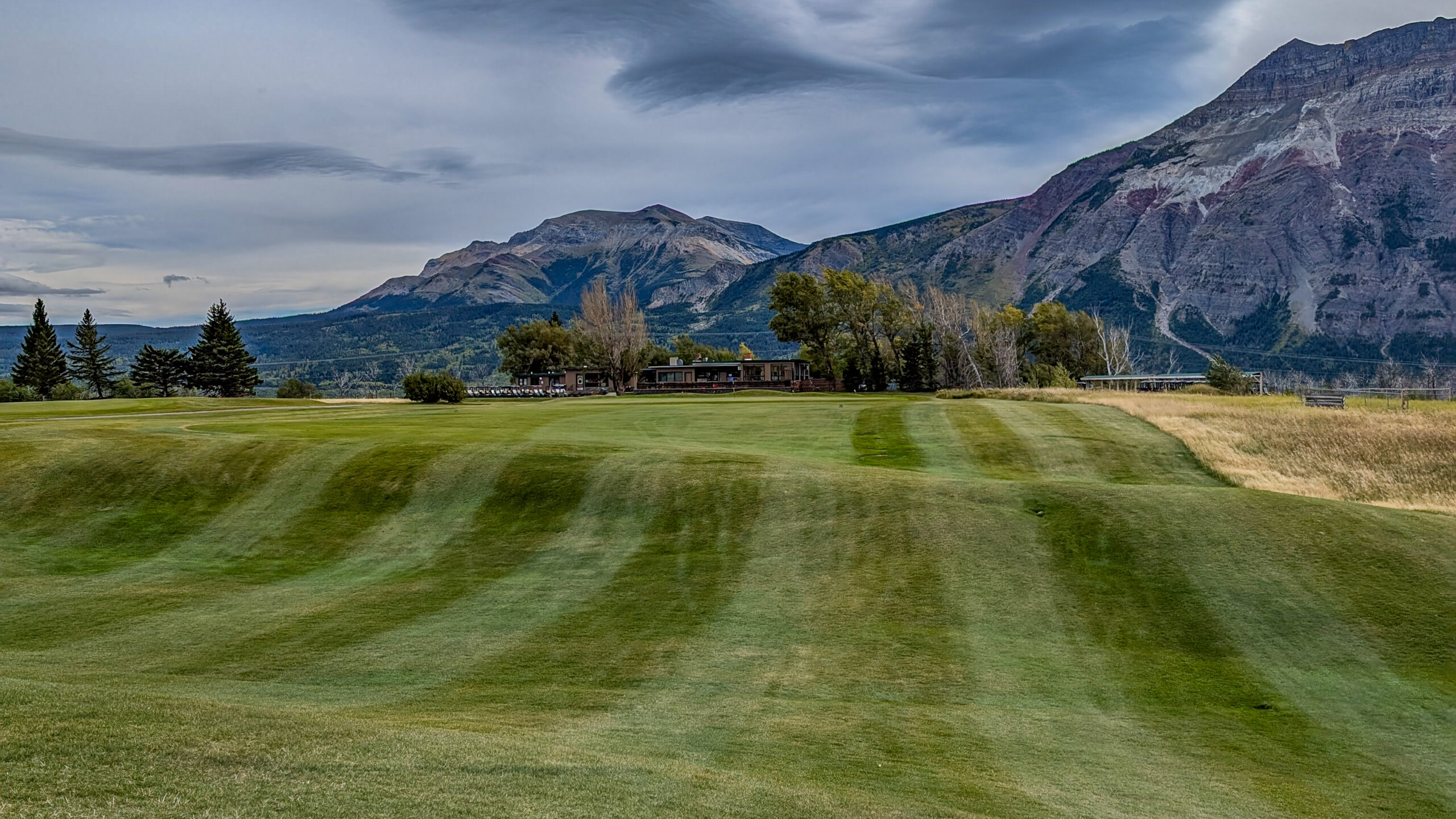
Those arriving armed with the expectation to find Augusta National-like conditions may be prone to disappointment. But this is proper golf, unusual, rambunctious, and unostentatious. That is what makes Waterton special and worth seeking.


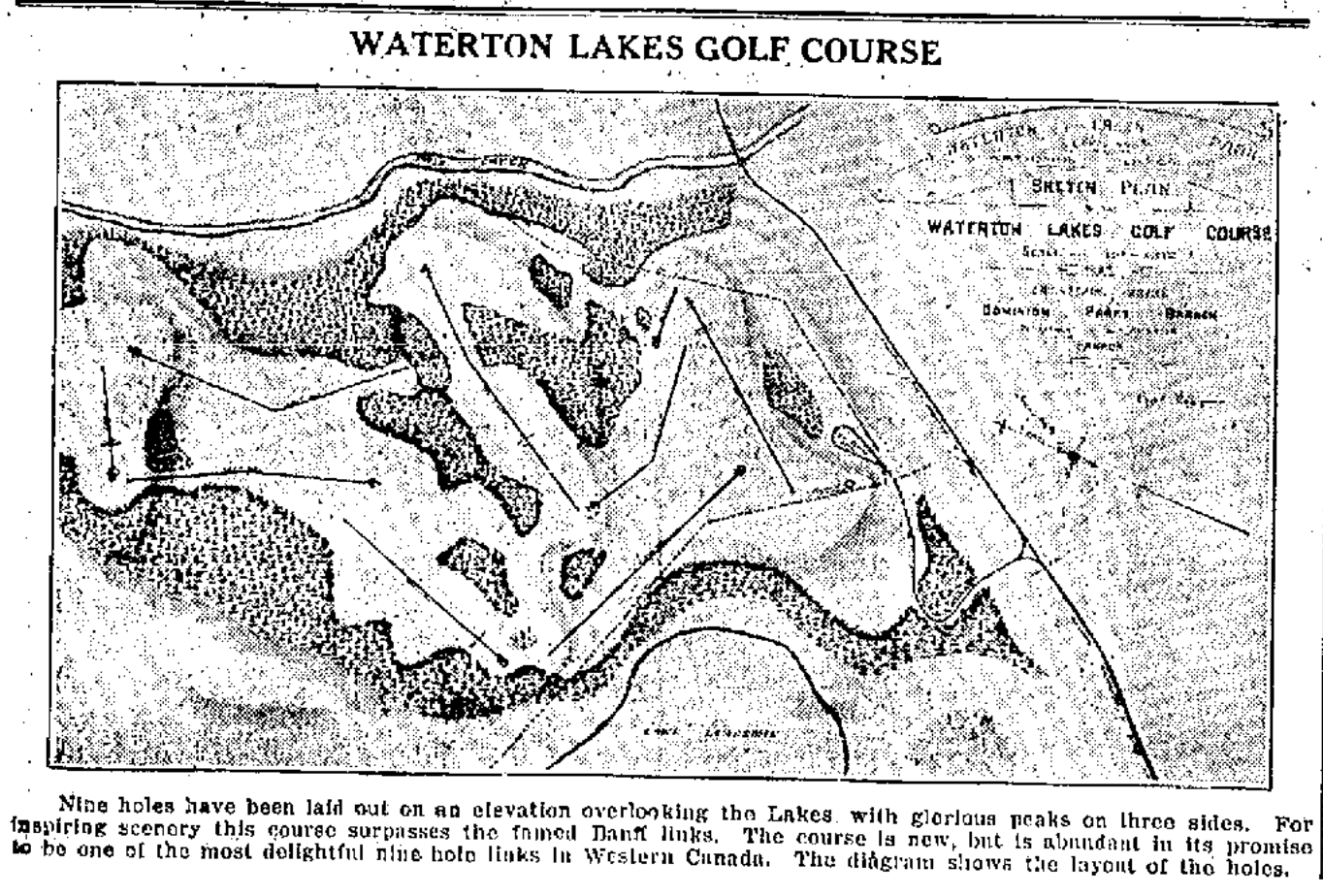
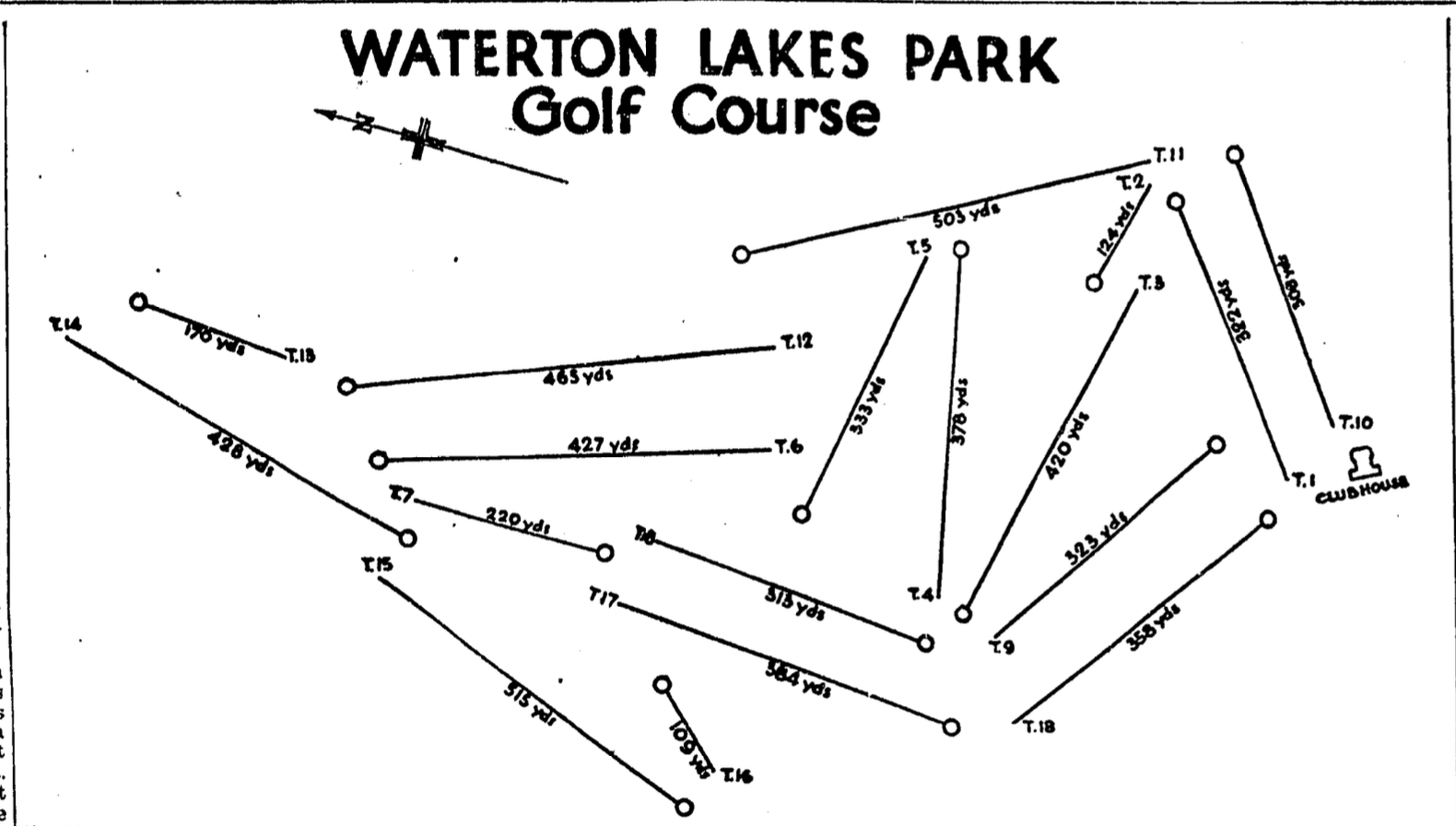
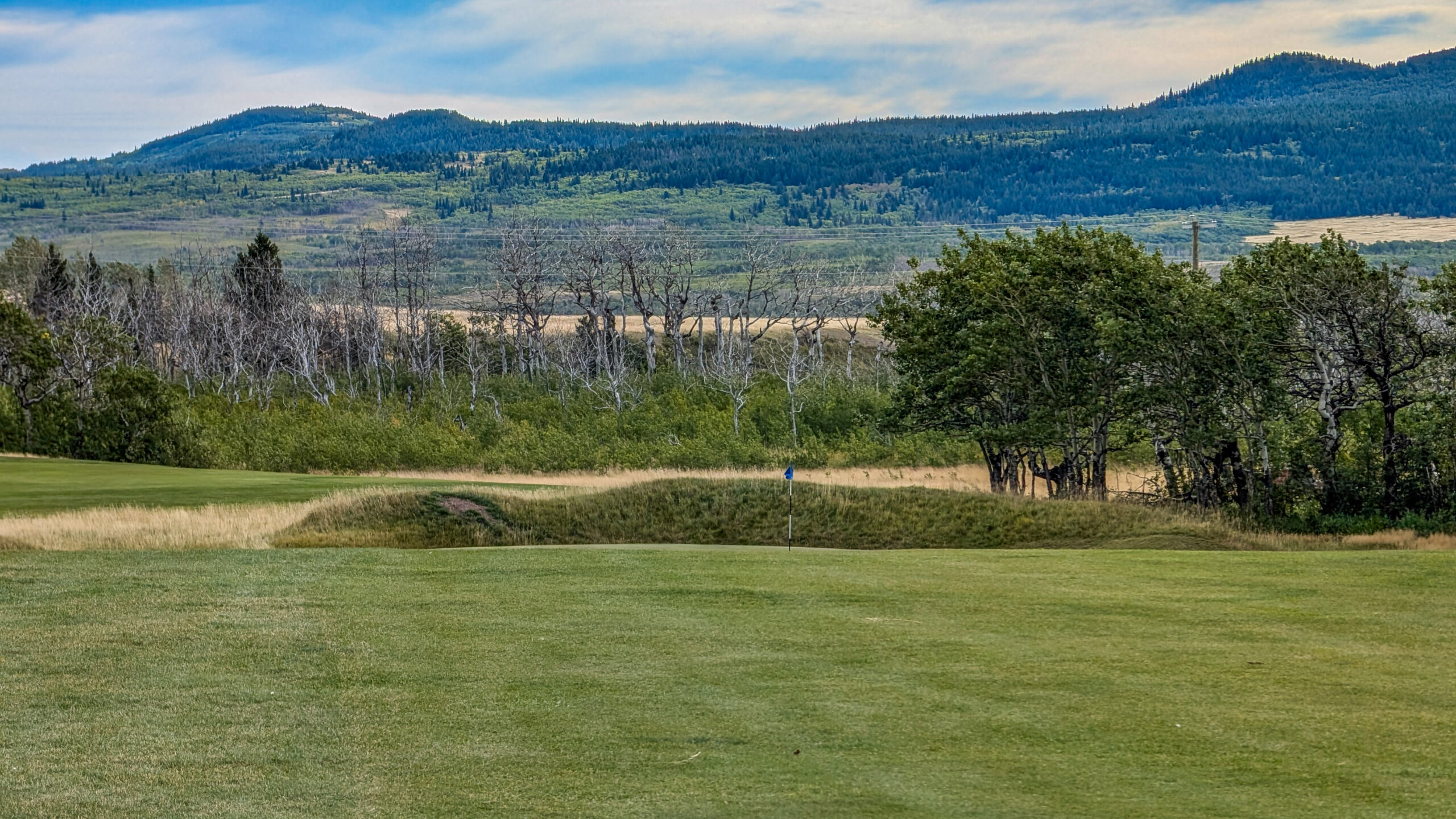

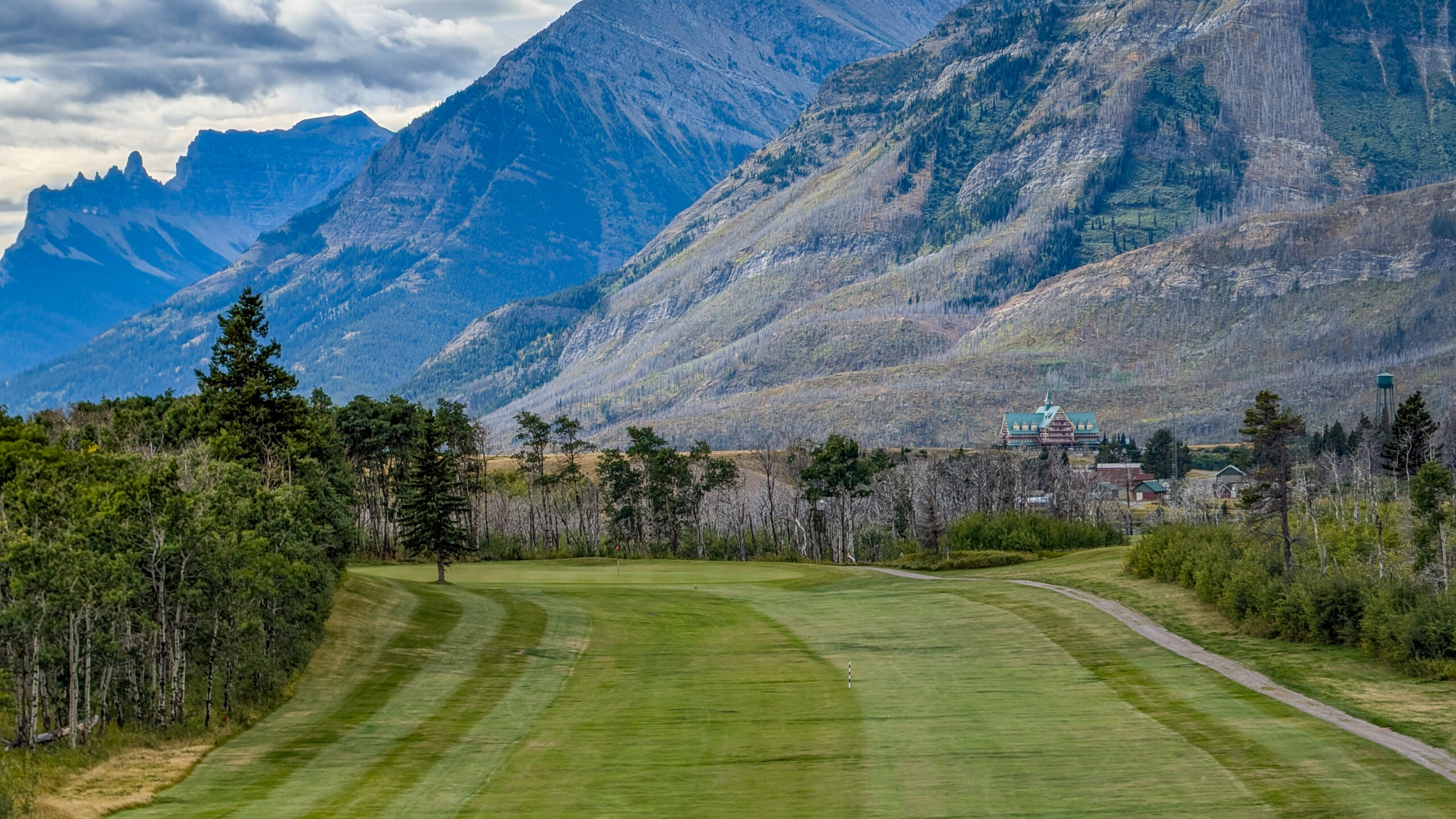
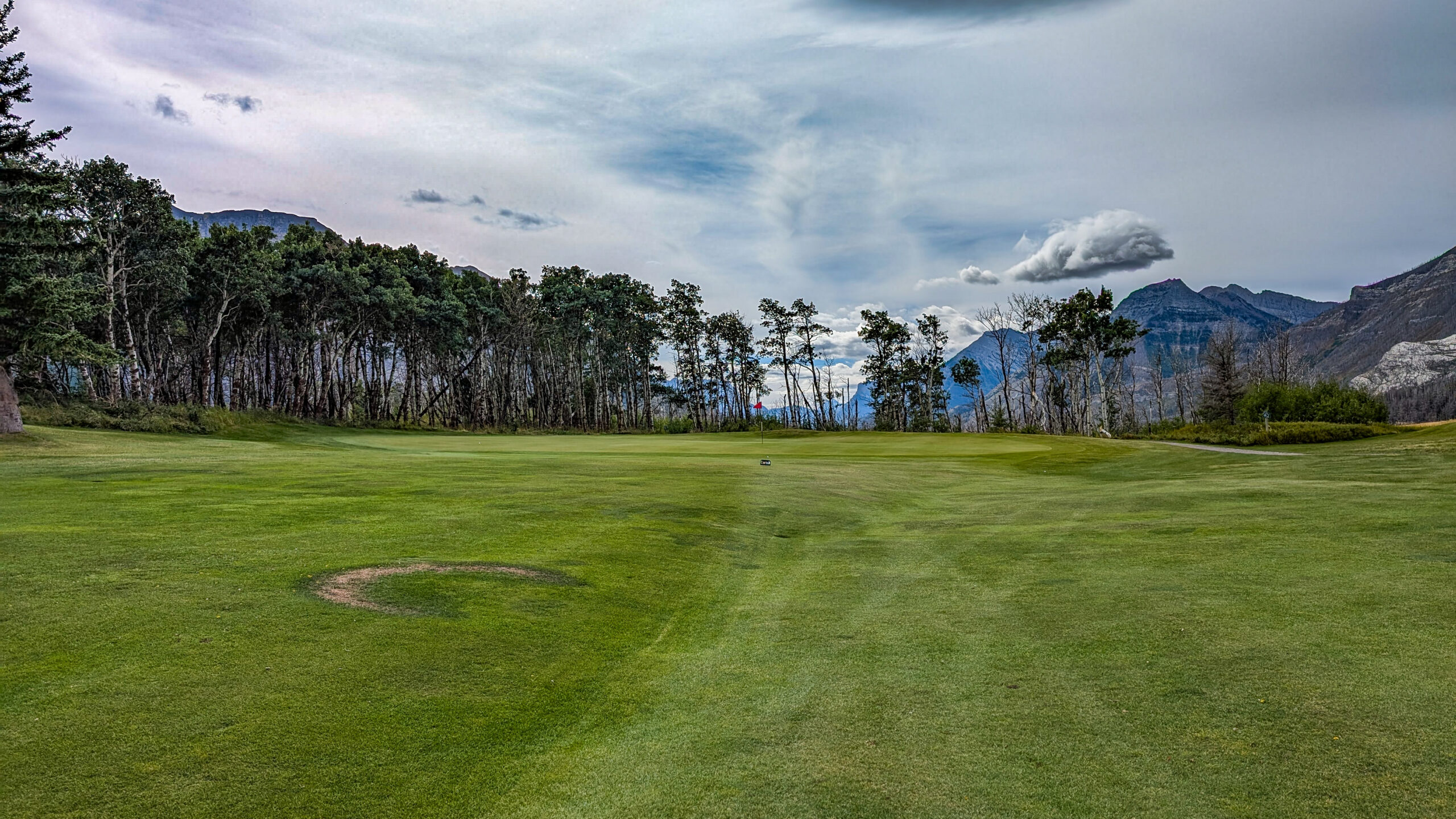
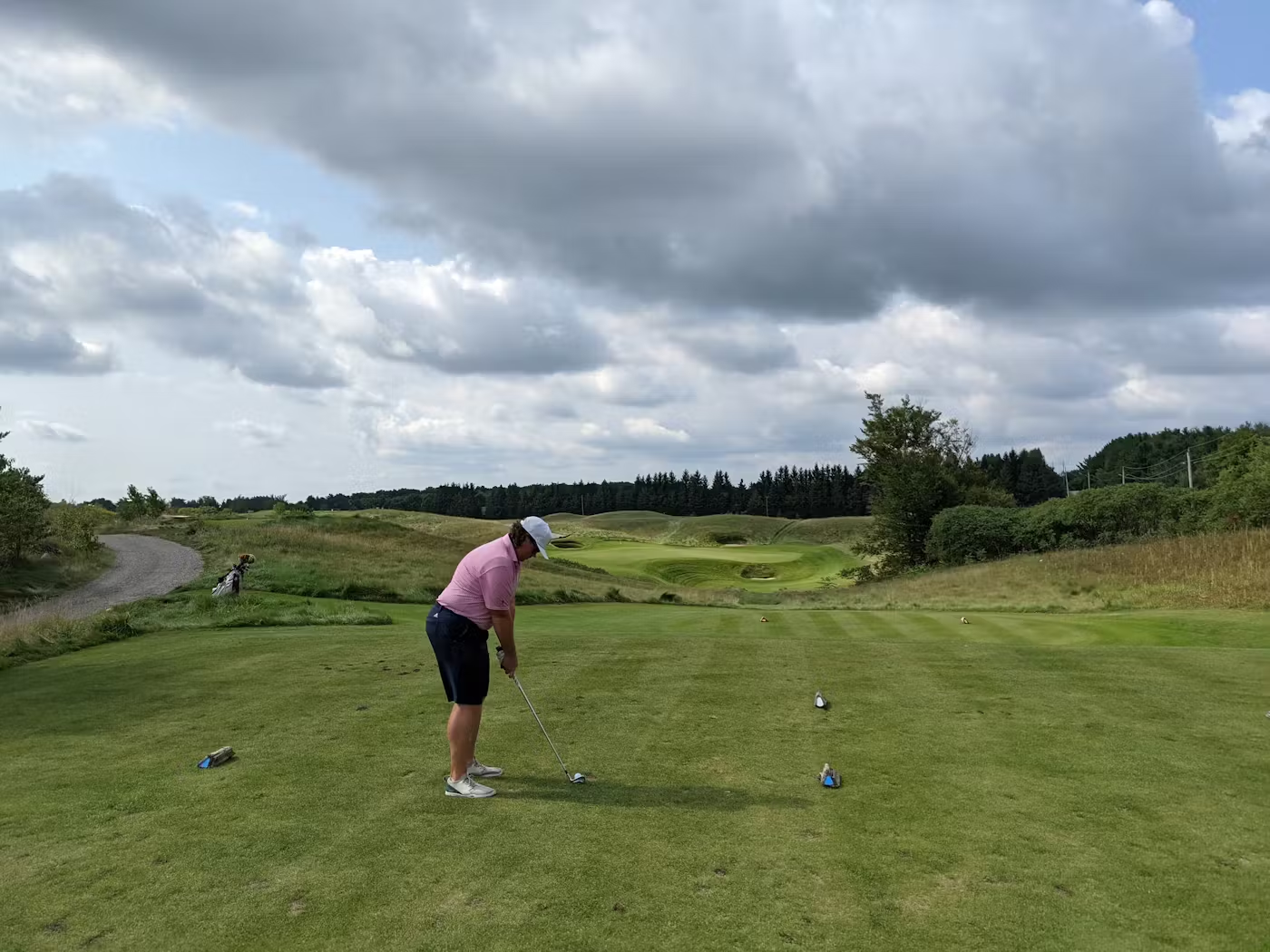
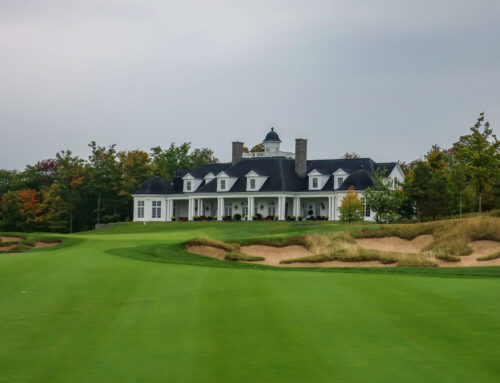

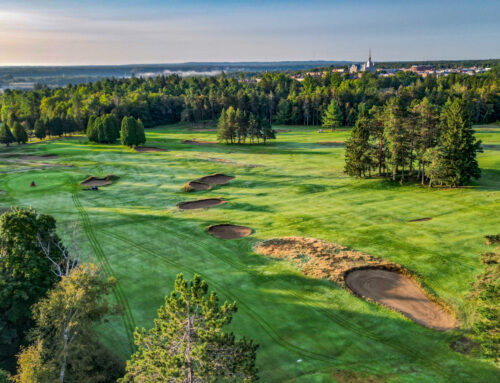
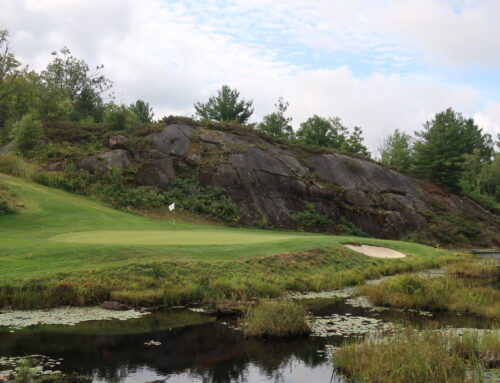
![Cabot Cape Breton (Links) [2013]](https://golfclubatlas.com/wp-content/uploads/2012/11/Cabot-Links-Golf-Course-500x383.jpg)
